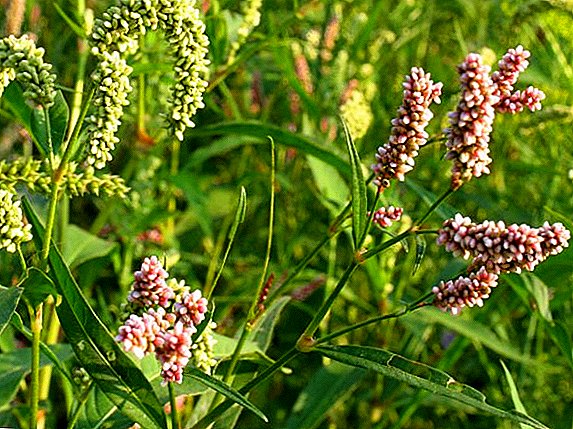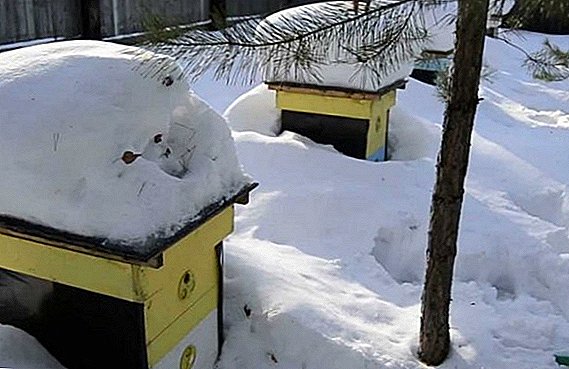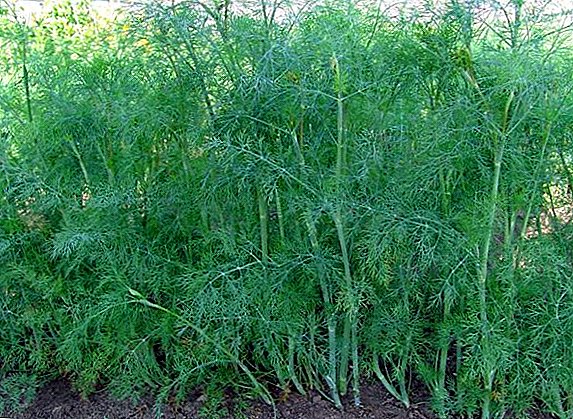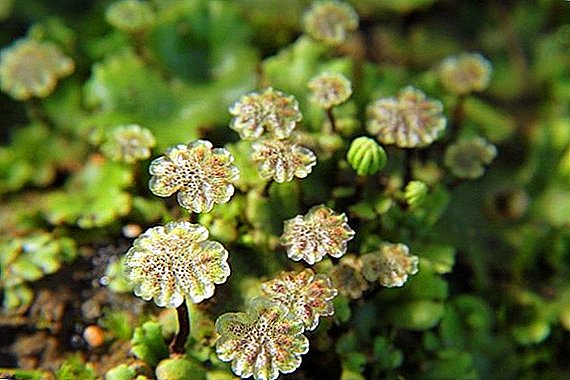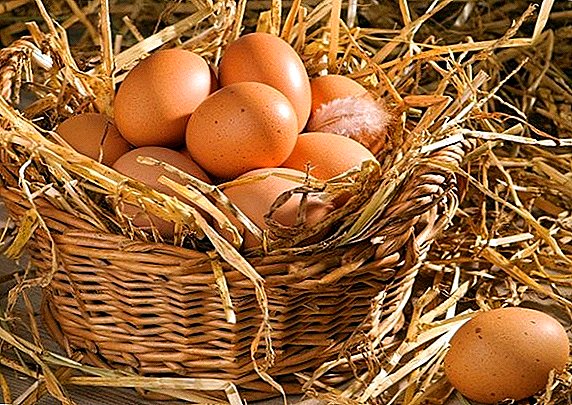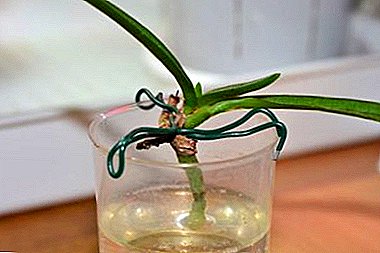
Orchid is a fastidious flower, the consequence of improper care for which may be the loss of the root system: the roots will rot or dry. However, do not get upset ahead of time - this, of course, is unpleasant, but not fatal and if you quickly take the necessary measures, phalaenopsis will recover. In our article we will describe in detail how to grow the roots of the flower.
How to understand that the root system is not functioning?
Phalaenopsis is a fairly viable plant, therefore, that with him something is wrong you can not suspect for a long time. If you notice any changes in the state of the flower, such as yellowed leaves, you should remove it from the pot and inspect the root system.
Healthy and lively roots should be green or white, with a lack of light they can be brownish, necessarily firm and dense to the touch, while rotten roots melt under the fingers and become hollow. If you click on them - moisture will stand out, and if the situation is completely running, they will crawl away under your fingers. In this case, the root system is no longer possible to save.
"Phalaenopsis without roots" is a falling apart plant with a dying bottom and a few leaves near the point of growth. It is necessary to immediately cut off all rotted and dried, and proceed to the resuscitation of the flower.
Why can this situation arise?
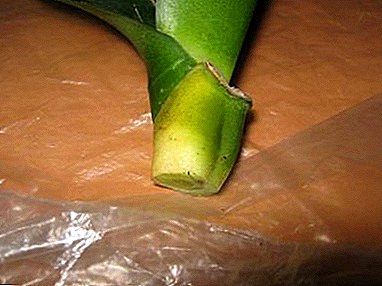 Too plentiful watering. The most common cause of rotting roots. Under conditions of constant humidity and poor ventilation, the velamen — the tissue that covers the roots — begins to rot and, over time, this process moves to the entire root system.
Too plentiful watering. The most common cause of rotting roots. Under conditions of constant humidity and poor ventilation, the velamen — the tissue that covers the roots — begins to rot and, over time, this process moves to the entire root system.- Lack of lighting. Light needs an orchid for photosynthesis, without it the flower cannot form new cells, which means it stops developing, almost ceases to absorb moisture, and its roots begin to die.
- Hypothermia If the temperature decreases, the process of absorbing moisture from the substrate is disturbed, which is why the flower receives a cold burn and the root cells die.
- Chemical burn. Too strong a concentration of fertilizer, irrigating with fertilizer over dry soil and too frequent application of top dressings can burn the tender root system.
- Diseases. If the orchid's land was first dried out and then flooded, an infection may occur, and first the leaves of the plant will become sluggish, and later the dying off of the roots will begin.
- Unsuitable substrate. In no case can not grow orchid in ordinary land - it rots the roots due to lack of air. Hydrogel or sphagnum as the main substrate can also only harm the root system of the plant, if the watering is incorrectly calculated.
- Lack of moisture and heat. It dries the roots of the plant.
- Hard and saline water. Such water cannot be used for irrigation; it badly affects the general condition of phalaenopsis and its root system in particular.
What is the danger?
Most of the orchids are epiphytic plants, which means that they receive all the substances necessary for normal growth from air and water, absorbing them through the roots. In addition, photosynthesis is also carried out through the roots.
Without roots, the flower will not be able to eat and grow and it will simply die.
Is it possible to save a flower in such a case?
Often beginning flower growers, having discovered rotten roots, literally bury a still living plant, whereas it can be saved, even if the root system has rotted completely. However, it should be understood that the process of reanimation of phalaenopsis without roots can take from several months to a year, there is no 100% guarantee that the flower will take root.
What is needed for this?
How to save a favorite plant?
 Carefully remove the orchid from the pot.
Carefully remove the orchid from the pot.- Remove residual soil from the root system by rinsing it in warm water.
- Carefully inspect the roots and cut off all rotted and dried areas, leaving only healthy roots.
- Cut the peduncles, as they take a lot of power from the plant.
- In case of rotten or dry spots on the leaves, cut to healthy tissue.
- Treat cut areas with crushed wood or activated charcoal or cinnamon.
- For additional prevention of the development of fungal diseases, soak for 15 minutes in a solution of fungicides, reducing the dosage by 2 times.
- Dry the flower from half an hour to 4 hours, you can leave for a day.
For successful resuscitation phalaenopsis requires a sufficient amount of light, therefore, in the winter it is necessary to use the fitolamp.
Step by step instructions on how to root
In the greenhouse
You can buy a finished greenhouse or make it yourself. For this, a plastic bottle, an aquarium, a plastic bag with a clasp, a plastic cake box are suitable.
- In the selected container you need to fill the clay, on top of him wet, but not wet sphagnum moss.
Important! It is necessary to use this type of moss because of its bactericidal and disinfectant properties.
- Place phalaenopsis on top of the moss.
- Next, you need to provide abundant and diffused lighting and air temperature + 22-25 degrees. At lower temperatures, the level of humidity will increase, which causes the appearance of mold and will not allow the plant to grow new roots. In the case of a higher temperature, the flower will burn and will not absorb, but evaporate moisture, which also does not contribute to the growth of the roots.
- During the growth of the root system, the greenhouse must be ventilated every day in the evening or at night. In winter, 20 minutes is enough. In the summer it is better to leave the greenhouse open until the morning.
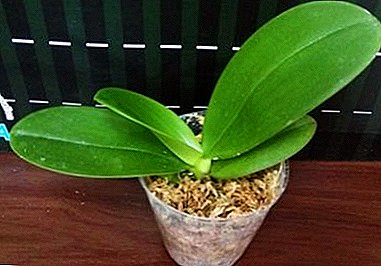 It is important to periodically inspect the place of contact with moss for the presence of darkened, water-filled areas. In case of their detection, it is necessary to dry the phalaenopsis outside the greenhouse and lay it back on the other side.
It is important to periodically inspect the place of contact with moss for the presence of darkened, water-filled areas. In case of their detection, it is necessary to dry the phalaenopsis outside the greenhouse and lay it back on the other side.- To stimulate root growth should be every 10-20 days to conduct dressing. The most suitable micronutrient is iron chelate.
- Once a month you need to use growth stimulants, such as "Epin" or "Zircon".
- To maintain the elasticity of the leaves, you need to rub them with a solution of sugar or honey at the rate of 1 teaspoon per liter of water.
We offer to watch a video about orchid resuscitation without roots using a greenhouse:
At home
Alternating soaking with drying
- For this method it is necessary to choose a transparent container in which the base of the orchid will freely fit and place the plant in it so that the base of the root is slightly higher than the bottom.
- Every day in the morning you need to pour a little warm water (approximately + 24-25 degrees) to the base to submerge it slightly, and after 4-6 hours to drain it and dry the orchid until the next morning. Lighting should be abundant, but it is necessary to exclude the possibility of direct sunlight.
Immersion of leaves
When using this method, it is necessary to immerse not the base, but the leaves of phalaenopsis.
- It is necessary to fill the container with water with the addition of crushed coal and immerse the expanded leaves of the plant into it by a third.
- The roots that remain in the air must be sprayed daily with water with the addition of succinic acid or vitamin B, and from time to time a root growth stimulator should be used.
- After the appearance of the first roots, the plant should be placed in a transparent pot with sphagnum moss.
Build-up in water
To do this, immerse phalaenopsis in a solution of warm filtered water. with the addition of "root", iron chelate or glucose, which should be changed every 5 days.
This method is the least suitable for orchids, since the growth of roots is slow, they often rot and poorly take root in the substrate.
In the video you can see the method of resuscitation of orchids in the water:
Resuscitation orchids above the water
 This will require a transparent container and cool boiled water.
This will require a transparent container and cool boiled water.
- It is necessary to place phalaenopsis above water in such a way that it does not touch it, and place the container in a well-ventilated place with an air temperature not lower than +23 degrees.
- It is necessary from time to time to wipe the leaves of the plant with a solution of succinic acid and ensure that the water does not evaporate completely.
Video about reanimation of an orchid without roots above water:
How to speed up the process?
All described methods of resuscitation of phalaenopsis take quite a long time, to stimulate this process, you can:
- Wipe the leaves and mix into the water a solution of succinic acid at the rate of 4 tablets per liter of water.
- Dilute one ampoule of vitamin B1, B6 and B12 in a liter of water and dip into the solution the part of the orchid from which the roots will grow, leave it at night.
- Feed the plant daily with glucose, sugar or honey.
- Feed iron chelate every 2-3 days, and fertilizers containing potassium and phosphorus - every 20 days.
It is necessary to alternate feeding, otherwise you can not notice that some of them are ineffective and the plant will die.
When to plant a plant in the ground?
It is possible to transplant phalaenopsis into the substrate only after the roots have grown at least 3-5 mm.
- To do this, take a pot of no more than 8 cm in diameter, so that the plant quickly absorbs water and dries quickly.
It is better to use a peat pot, then in the future you will not need to repot the plant completely, but just rearrange it in a new pot and add a substrate.
- When the roots are 7-8 cm long, it is necessary to transplant the phalaenopsis into a larger pot and fix it on a support.
Aftercare
When the plant grows roots and pick up turgor, it is necessary to accustom him to dry air after greenhouse conditions. This will require a new greenhouse from a transparent bag or the bottom of a plastic bottle. It is necessary to put it on the plant for 5-6 hours a day so that it is 10 cm from the tips of the leaves to its bottom.
After a few weeks, phalaenopsis is fully adaptable.
Do not rush to part with a flower, even if it has lost all its roots. - just choose the most suitable method of increasing the new root system, follow the instructions and the phalaenopsis will recover and will again begin to delight with its flowering.


 Too plentiful watering. The most common cause of rotting roots. Under conditions of constant humidity and poor ventilation, the velamen — the tissue that covers the roots — begins to rot and, over time, this process moves to the entire root system.
Too plentiful watering. The most common cause of rotting roots. Under conditions of constant humidity and poor ventilation, the velamen — the tissue that covers the roots — begins to rot and, over time, this process moves to the entire root system. Carefully remove the orchid from the pot.
Carefully remove the orchid from the pot. It is important to periodically inspect the place of contact with moss for the presence of darkened, water-filled areas. In case of their detection, it is necessary to dry the phalaenopsis outside the greenhouse and lay it back on the other side.
It is important to periodically inspect the place of contact with moss for the presence of darkened, water-filled areas. In case of their detection, it is necessary to dry the phalaenopsis outside the greenhouse and lay it back on the other side.